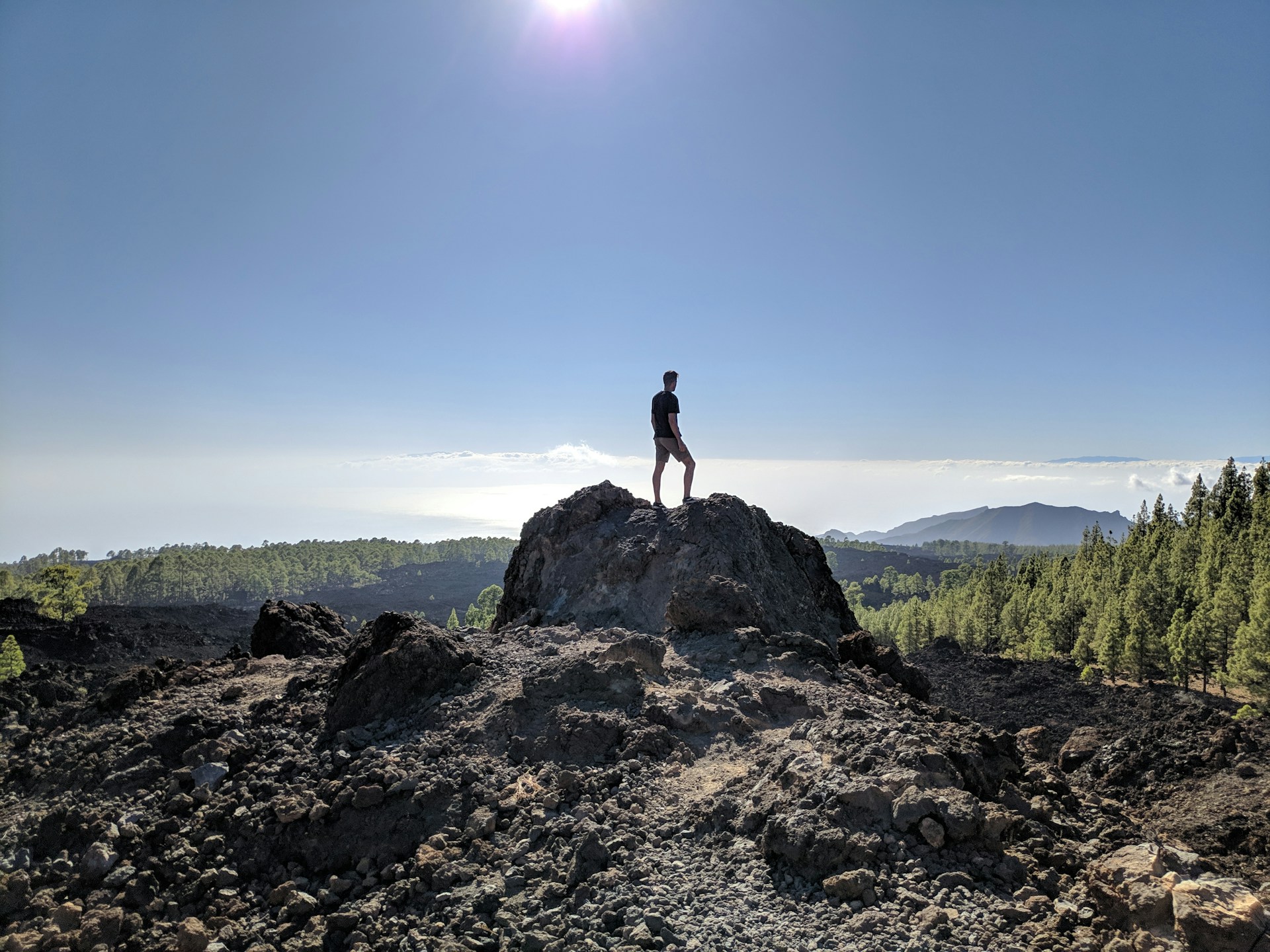Preparedness
Beat the Heat: Essential Tips for Staying Cool and Safe

As temperatures climb, the risk of heat-related illnesses becomes a pressing concern. These conditions, including heat cramps, heat exhaustion, and heat stroke, arise when your body’s natural cooling mechanisms falter. When the body struggles to maintain a safe temperature, health complications can ensue.
While air temperature is a significant factor, humidity also plays a crucial role in how effectively your body can cool itself. The heat index, which combines air temperature with humidity levels, provides a more accurate measure of how hot it feels. For instance, a temperature of 90 degrees with 70% humidity can feel like a scorching 106 degrees. When the heat index reaches 90°F or higher, it’s essential to exercise extreme caution as high humidity impedes the evaporation of sweat, making it harder for the body to cool down.
Heat cramps are the mildest heat-related ailment and manifest as painful muscle spasms during or after intense physical activity in hot conditions. These cramps signal that the body is struggling to cope with the heat.
Heat exhaustion is more serious and results from significant loss of water and salt due to excessive sweating without adequate replenishment. If not addressed, heat exhaustion can escalate to heat stroke, a life-threatening emergency. Immediate medical attention is crucial in cases of heat stroke, as the body’s heat-regulating system becomes overwhelmed. “Call 911 and try to cool the outside of the body until help arrives.”
Certain factors can increase your vulnerability to heat illnesses, such as age, with both the very young and the elderly being more susceptible. Recognizing the symptoms of heat exhaustion and heat stroke is vital. If you or someone else experiences these symptoms, it’s important to act quickly. “Put cool, wet cloths on your body or take a cool bath” to help lower body temperature. However, “do not give the person anything to drink” if they are experiencing heat stroke symptoms.
To minimize the risk of heat-related illnesses, stay indoors in air-conditioned environments as much as possible. If your home lacks air conditioning, consider spending time in public places like shopping malls or libraries. “Keep in mind: Electric fans may provide comfort, but when the temperature is in the high 90s, they will not prevent heat-related illness.”
When venturing outdoors, plan activities for the cooler parts of the day, such as early morning or evening. Take frequent breaks in shaded areas to allow your body to recover. If you engage in physical activities, pace yourself and be vigilant for signs of overheating, such as a pounding heart or shortness of breath. If these occur, stop immediately and rest in a cool place.
Sun protection is also crucial. Sunburn can impair your body’s ability to cool down and lead to dehydration. Apply sunscreen with SPF 15 or higher, and wear protective clothing like wide-brimmed hats and sunglasses. “Look for sunscreens that say ‘broad spectrum’ or ‘UVA/UVB protection’ on their labels.”
Hydration is key to preventing heat-related illnesses. Drink plenty of fluids, even if you don’t feel thirsty. Avoid sugary, caffeinated, or alcoholic beverages as they can cause fluid loss. “If your doctor limits the amount you drink or has you on water pills, ask how much you should drink while the weather is hot.”
Replenishing lost salt and minerals is also important. Sports drinks can help, but consult your doctor if you have dietary restrictions. Avoid hot, heavy meals that can increase your body temperature. Instead, opt for foods with high water content, such as melons and cucumbers, to stay hydrated.
Prevention is the best strategy for both humans and animals. Ensure that pets have access to shade and plenty of cool, clean water throughout the day. By taking these precautions, you can reduce the risk of heat-related illnesses and enjoy the warmer months safely.
Let us know what you think, please share your thoughts in the comments below.

Preparedness
Unlock the Secrets of Rainwater Harvesting for Self-Reliance

Collecting rainwater is a practical method of harnessing natural resources, involving the capture of runoff from roofs or other impermeable surfaces for future use. This straightforward process typically involves directing rain from rooftops into gutters, which then channel the water through downspouts into storage containers.
Rainwater harvesting systems can vary in complexity. They range from simple rain barrels to more intricate setups with large cisterns capable of meeting the water demands of an entire household. While often associated with rural settings or developing countries, rainwater harvesting is increasingly recognized as a feasible option for homes and businesses alike.
Before embarking on a rainwater harvesting project, it is crucial to familiarize yourself with local regulations. “Colorado basically bans it, and other states may have restrictions as well.” Therefore, understanding the legal landscape is an essential first step.
The potential volume of rainwater you can collect depends on specific calculations. The basic formula is 1 inch of rain falling on 1 square foot of roof yields 0.623 gallons. A more straightforward calculation is that 1 inch of rain on a 1,000 square foot roof produces 623 gallons. To estimate annual collection potential, you need to know your area’s average annual rainfall and the square footage of your roof. Suitable roofing materials for catchment systems include aluminum, tiles, slate, or galvanized corrugated iron. Collection systems can be installed on various structures such as homes, barns, or other outbuildings.
The size and complexity of your system can vary, but they all share core principles. The simplest method involves placing a barrel under a gutter downspout. These barrels are often readily available and fit easily into most settings. However, they generally hold only 50 to 100 gallons, which means they can overflow quickly.
For those needing more storage, larger tanks can be used. This method involves a “dry” collection pipe that empties into a tank after each rain. These systems are beneficial in areas with infrequent but heavy rainfalls. Although they are less complex, the tanks are large and must be placed near the house.
A more sophisticated option involves underground piping to connect multiple downspouts. This setup allows for collecting rainwater from the entire roof surface and locating the storage tank away from the house. However, it is more costly due to the need for underground pipes and requires careful planning to ensure proper elevation differences.
Rainwater stored in these systems typically has a bacterial load similar to natural streams, so it must be treated for safe consumption. If rainwater is your primary water source, a pressurized system will be necessary to deliver water throughout your home. For those using rainwater for irrigation or as a backup, systems like the Alexapure Pro can provide sufficient potable water for drinking and cooking.
Having a water catchment system, even a simple one, can offer peace of mind during power outages, especially for those relying on well water. Knowing you have a backup water source can be invaluable in emergencies, ensuring you’re prepared for whatever comes your way.
Let us know what you think, please share your thoughts in the comments below.
Preparedness
Master Crisis Survival with the Rule of Three

In an unpredictable world, being prepared for emergencies is more than just a smart idea; it’s essential. Whether it’s a car accident in a remote location or getting stranded in the wilderness, knowing survival skills can make all the difference. However, it’s not enough to just learn these skills or own the right tools; you must also know how to prioritize them in a crisis.
Survival experts often refer to the Rule of Three when making decisions under pressure. This rule provides a guideline for how long you can survive without essential needs like air, shelter, water, and food. While there are variables, such as climate and individual size, the Rule of Three is a useful framework for prioritizing needs.
The most immediate concern in any emergency is oxygen. “Just a few seconds of oxygen deprivation to the brain can cause someone to lose consciousness,” and prolonged deprivation can lead to death. Therefore, if someone in your group is injured and struggling to breathe, your first task is to address this issue. Basic first aid skills, including CPR and the Heimlich Maneuver, can be life-saving.
Once immediate medical needs are addressed, the next priority is shelter. Shelter isn’t just about having a roof over your head; it also includes clothing. Being improperly dressed for the weather can lead to dangerous situations, such as hypothermia. It’s crucial to know how to create a shelter and build a fire for warmth. Fire not only provides heat but also allows for cooking and water purification.
Water is another critical need. Most experts agree that you can’t survive more than three days without it. However, environmental conditions can affect this timeline. In hot climates, for example, you’ll need more water. It’s essential to know how to find and purify water in the wilderness to prevent illnesses like diarrhea, which can hasten dehydration.
While you can survive longer without food than water, it’s still important. Having emergency food supplies can be a lifesaver, but in their absence, you’ll need to forage, hunt, or fish for sustenance. Rationing what you have is crucial to making it last as long as possible.
Beyond physical needs, hope is a critical component of survival. Without it, the will to continue fades. The movie *Castaway* illustrates this well. Tom Hanks’ character says, “I know what I have to do now. I’ve got to keep breathing because tomorrow the sun will rise. Who knows what the tide could bring.” This mindset is vital for enduring tough situations.
Finally, human companionship is another often overlooked necessity. In the film, the character creates a companion out of a volleyball named Wilson to combat loneliness. Having people you can depend on and who will notice if you go missing is crucial for any survival plan.
In summary, preparedness is about more than just having the right tools or skills; it’s about knowing how to prioritize your actions in a crisis. By following the Rule of Three, you can make informed decisions that increase your chances of survival.
Let us know what you think, please share your thoughts in the comments below.
Preparedness
Uncover Hidden Laws Shaping Your Homesteading Dream

For those seeking a lifestyle rooted in self-sufficiency, homesteading offers a compelling path. However, the dream of living off the land is often shaped by the legal landscape of homesteading laws and restrictions that vary widely depending on where you reside.
The concept of homesteading is not new. According to The History Channel, “The 1862 Homestead Act accelerated settlement of U.S. western territory by allowing any American, including freed slaves, to put in a claim for up to 160 free acres of federal land.” Although the Homestead Act was repealed in 1976, the spirit of homesteading persists, with new laws designed to protect the rights of modern homesteaders.
Today, homesteading encompasses a range of practices focused on self-sufficiency, from growing one’s own food to adopting sustainable living practices. Whether in rural expanses or urban rooftops, the homesteading lifestyle is adaptable, but it largely hinges on the “laws of the land.”
One of the key legal instruments for homesteaders is the Declaration of Homestead. As Mother Earth News notes, “A Declaration of Homestead is a simple legal document which can help to protect your house and property in times of economic hardship.” This document can safeguard your home from creditors, though the extent of protection varies by state.
States have different approaches to homestead protection laws, which allow property owners to designate a portion of their property as a “homestead,” making it off-limits to creditors. These protections often differ in terms of acreage or property value, with rural properties generally receiving greater exemptions due to their agricultural use.
For those dreaming of a homestead lifestyle, understanding state-specific laws is crucial. For instance, Indiana allows individuals to claim up to $10,000 worth of property as a homestead without a maximum size limit, offering significant protection from creditors.
Beyond state laws, local regulations can significantly impact homesteading plans. Deed restrictions, zoning regulations, and building codes all play a role in what is permissible on your property. For example, deed restrictions might prevent you from erecting certain structures, while zoning laws could limit your ability to sell homemade goods.
Building codes can also pose challenges, especially for those interested in alternative construction methods. As GOKCE Capital explains, “Even if a parcel of land has no HOA or zoning restrictions, the local municipality or county may still require you to build according to their local building code.”
Livestock ownership is another area where homesteaders must navigate complex regulations. What animals you can raise, and how many, often depend on your specific location. Even within states, counties and cities may have differing ordinances regarding livestock.
For those looking to sell their homestead products, understanding cottage food laws is essential. These laws, which vary by state, govern the sale of homemade food items, often restricting certain goods to protect consumer safety.
Wildlife laws can also affect homesteaders, as many areas have regulations to protect local fauna. Additionally, some places have surprising restrictions, such as prohibitions against front-yard edible gardens.
Beekeeping, a popular homesteading activity, is subject to its own set of regulations. Local laws may limit the number of hives you can maintain, particularly in urban areas.
Finally, rainwater harvesting is a practice embraced by many homesteaders, but its legality varies. While Texas encourages it with tax incentives, Colorado prohibits it, highlighting the importance of researching local laws before collecting rainwater.
In conclusion, while homesteading offers a path to self-sufficiency, it is essential to thoroughly research and understand the various laws and restrictions that may impact your homesteading journey.
Let us know what you think, please share your thoughts in the comments below.
-

 Tactical1 year ago
Tactical1 year ago70-Year-Old Fends Off Intruder with Lead-Powered Message
-

 Tactical1 year ago
Tactical1 year agoVape Shop Employee Confronts Armed Crooks, Sends Them Running
-

 Preparedness1 year ago
Preparedness1 year agoEx-Ballerina’s Guilty Verdict Sends Tremors Through Gun-Owner Community
-

 Preparedness11 months ago
Preparedness11 months agoGood Samaritan Saves Trooper in Harrowing Interstate Confrontation
-

 Tactical1 year ago
Tactical1 year agoMidnight SUV Theft Interrupted by Armed Homeowner’s Retaliation
-

 Survival Stories2 years ago
Survival Stories2 years agoEmily’s 30-Day Experience of Being Stranded on a Desert Island
-

 Preparedness12 months ago
Preparedness12 months agoArizona Engineer’s Headless Body Found in Desert: Friend Charged
-

 Preparedness11 months ago
Preparedness11 months agoBoy Saves Dad from Bear Attack with One Perfect Shot